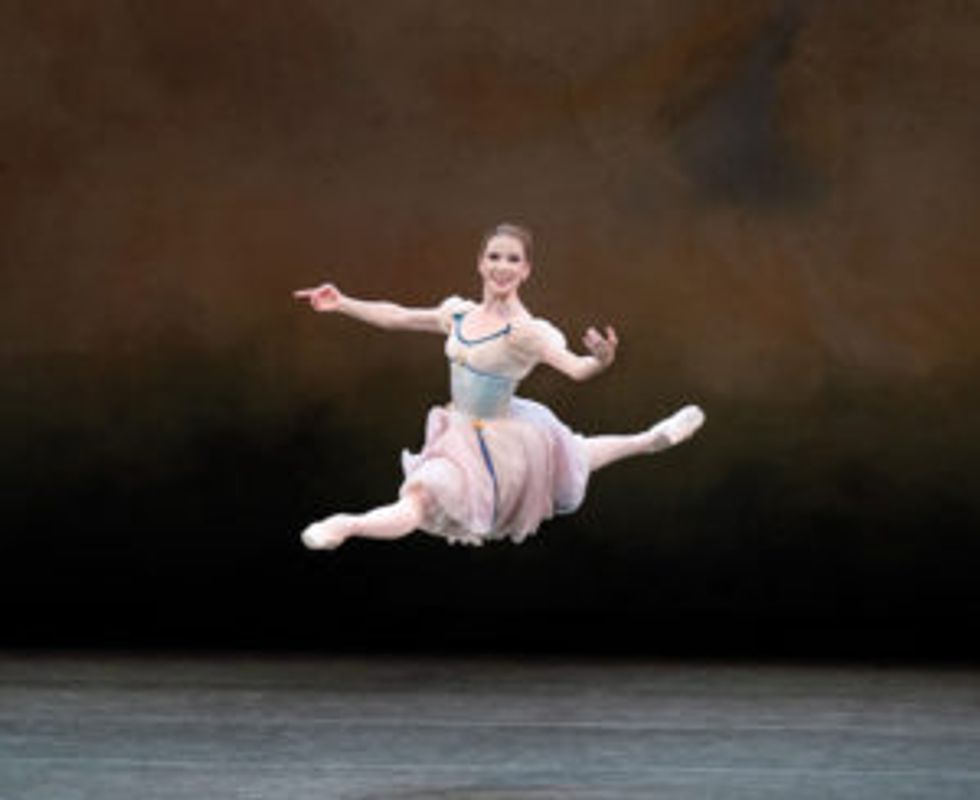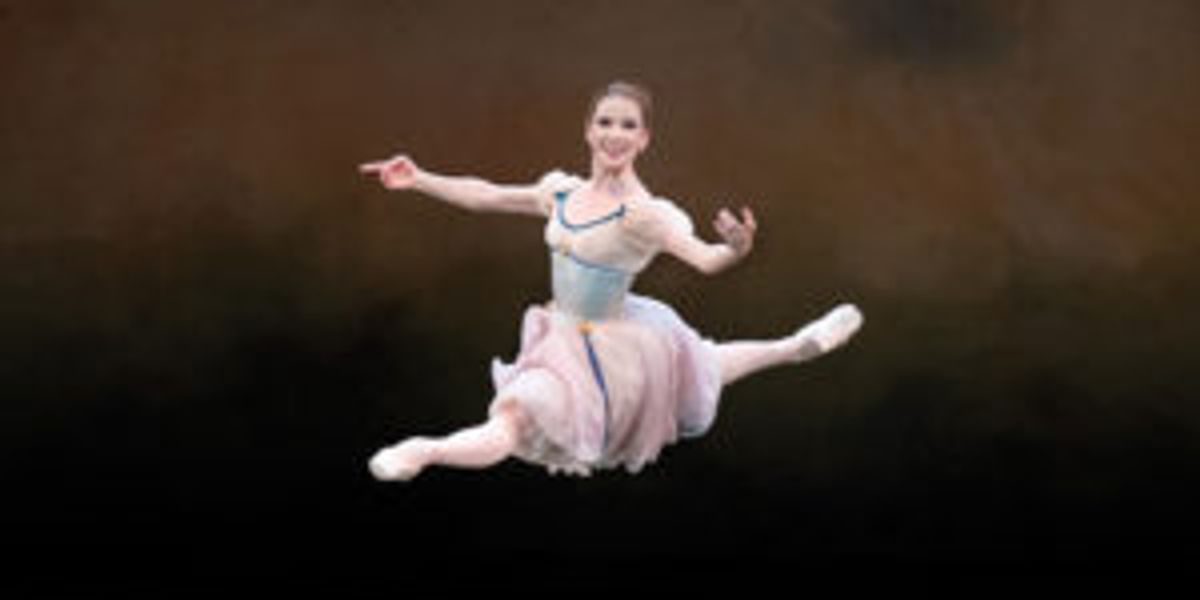Ache, Throb, Hurt
New York City Ballet principal Abi Stafford opens up about the frustrating, but unavoidable role of pain in a dance career.

Soaring through “Flower Festival in Genzano,” from Bournonville Divertissements. PC Paul Kolnik, Courtesy NYCB
My lower back went into spasm during a three-week tour to Paris with New York City Ballet this summer. I was dancing Sanguinic in The Four Temperaments, a role that requires the hips to be pushed forward in an exaggerated manner. Because of the raked stage, I was forced to dance with my shoulders placed even farther back than normal, and I could feel the extreme position compressing my lower spine. Yet with the excitement of performing in Paris, I pushed my hips forward with all my might, even though I sensed danger as each tiny back muscle slowly seized up. It felt like fingernails were pressing hard into each nerve. As I danced, I imagined each muscle turning red and gripping furiously. The spasm worked its way up, eventually taking over most of my back.
At the risk of sounding bleak, pain is simply a fact of life for dancers. Of course, not all pain is created equal. It varies from niggling bruised toenails to crippling torn ligaments. There is temporary pain from pulled muscles and chronic pain from tendonitis. Nerves make stomachs hurt. Performances make lungs burn, leg muscles cramp and arms tingle. And at the end of the day, exhaustion can bring on all-encompassing suffering.
Yet there is pain one can dance with, and pain that one can’t. For me, lower back pain is nothing new. My first foray into back pain came after executing an overenthusiastic tour jeté, sending my back out of alignment while I was still a student at the School of American Ballet.
This time, as a 30-something, the pain was different. Earlier times when my back went out, the hurt was superficial. It would vanish after a quick adjustment from a chiropractor. Now, it was deep and muscular. I had a sense that my poor, angry muscles needed time to calm down. But I still hoped to get back to normal quickly. I diligently signed up for physical therapy appointments. I applied heating pads and ice packs. I popped Advil. I visited chiropractors and massage therapists. I bent from my knees to pick up my 1-year-old baby, keeping my back straight. (Unfortunately, that didn’t make my back better but did split my favorite pair of shorts.)

Confidence gave Stafford more freedom onstage. Here, in Balanchine’s A Midsummer Night’s Dream. PC Paul Kolnik, Courtesy NYCB
Despite my best efforts, the pain didn’t improve. I knew this wasn’t the type of pain I should dance through. I was awfully close to looking injured onstage. But I continued to rehearse for my remaining performances anyway. It’s not easy to admit you’re unable to dance. I didn’t want to feel like a failure. Others were managing to perform with injuries, so why couldn’t I? I felt like I should have been able to prevent my injury, which was, of course, impossible.
By the end of the finale of Symphony in C during the last week of tour, it was clear that I had made my back much worse. After Paris, the company headed straight to a summer residency in Saratoga, New York. When we got there, I couldn’t physically make myself dance. My body rejected ballet. All dance steps hurt, from tendu derrière to fourth position, and even simply running. So I finally gave in and let myself stop, rest and heal. About three and a half weeks later, the deep muscle pain finally subsided.
If I had rested sooner, I could’ve healed faster and danced more in the end—which is all I want in the first place. But since this career is so short, we all want to squeeze in as much dancing as we can muster before the final curtain comes down. Often the fear of not being able to dance when it counts feels worse than the actual injury. And perhaps somewhere deep down we know that physical pain is temporary, but the memories and the rewards of dancing will last forever. So, this type of existence isn’t all bad. Although the pain is ever present, it becomes a badge of honor. An aching body post-performance signals tangible proof of a job well done. Sore muscles mean that stronger muscles are merely days away. Dancers hope that today’s pain might help their work feel a bit easier tomorrow. It gives us confidence to trust that our bodies are strong and capable of performing difficult choreography each night. The pain reminds us that we continue to grow—and that hard work is never in vain.
A Deeper Pain
As much as our bodies can hurt, emotional pain can be much harder to handle. For me, paralyzing self-doubt set in after reading online ballet message boards early in my career. Some people cited the many different ways that I wasn’t good enough. Others discussed how I shouldn’t have been given the roles I was dancing. Unfortunately, I believed them—and I carried their words onstage with me. I imagined them in the audience and pictured what they would later write about me. I desperately wanted to prove them wrong, yet I was afraid that they were right. I performed accordingly: My lack of confidence translated to the audience, continuing the cycle of vicious comments.
Feelings of inadequacy are normal in this career. But I’ve realized that I can make my skin as thick as I want. People using anonymous handles are not experts on ballet. The critiques to listen to are the ones from those who have my best interests at heart, like my artistic director, ballet masters and teachers. At the end of the day, I can only be me. And if I don’t like my own dancing, who will? Rather than trying to perfect my technique at this stage of my career, I plan to perfect my confidence. Instead of seeking out fans on the internet, I’ve decided to become my own biggest fan.




